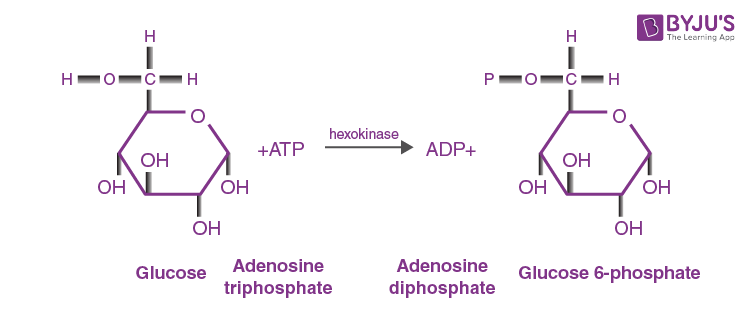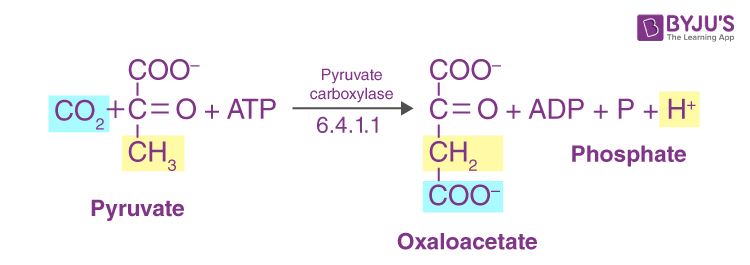Enzymes are proteins or biological molecules acting as catalysts facilitating complex reactions. They are typically active in mild conditions hence are extremely beneficial to be utilized in food technology, wherein raw materials are treated without interfering with the nutritional value. Enzymes work by binding to the substrates of the reaction, their reactants on a temporary basis, hence lowering the amount of activation energy required to accelerate the reaction. They are distinguished by a remarkably high rate of specificity and efficiency.
Download Complete Chapter Notes of Biomolecules
Download Now
Also See: Biomolecules – Important Notes for NEET
Naming and Classification Of Enzymes
The International Union of Biochemistry and Molecular Biology is entrusted with designating names to enzymes in addition to assigning a number in order to identify them.
Apart from a few originally studied enzymes such as rennin, pepsin and trypsin, almost all the enzyme names end in “ase”. As per the standards, focal points of nomenclature of enzymes are both the type of reaction catalyzed and the substrate acted upon.
Most commonly, enzymes are named to provide data on the function as opposed to the structure of the enzyme. However, there are 3 significant features of the nomenclature process of enzymes, which are:
- Suffix -ase recognizes a substance as that of an enzyme
- Suffix -in is observed in the name of first enzymes learnt as pepsin, chymotrypsin, trypsin
- Prefix is identified by the type of reaction the enzyme catalyzes
- Enzyme hydrolase : catalyzes a hydrolysis reaction
- Enzyme oxidase : catalyzes an oxidation reaction
- In addition to the type of reaction, the identity of the substrate is taken into consideration
- Glucose oxidase – catalysis of glucose oxidation
- Lactate dehydrogenase – catalysis of eliminating hydrogen from lactate ion
- Lactase – hydrolysis of lactose is catalyzed
- Urease – hydrolysis of urea is catalyzed
Example of Naming:
As per the standard International Union of Biochemistry, the name of the enzyme comprises 2 parts –
1. Name of the substrate for the enzyme
2. Type of reaction catalyzed by the enzyme. The second part, therefore, ends with “ase” suffix
Example – Lactate dehydrogenase
Conventions of Naming – EC Numbers
The nomenclature developed by the International Union of Biochemistry and Molecular Biology has something called EC numbers where each enzyme is preceded by EC. The first number in this series classifies this enzyme on the basis of its mechanism.
EC Numbers
There are six groups of enzymes as per the reaction that is being catalyzed. Therefore, all enzymes are designated as “EC numbers”. This classification does not consider protein structure, amino acid sequence or even the chemical mechanism.
EC number is a 4 digit number for instance – a.b.c.d. Here “a” is class, “b” is subclass, “c” is sub-subclass and “d” is the sub-sub-subclass. The “b” and “c” part of the EC number describes the reaction, “d” differentiates between different enzymes with similar function on the basis of the actual substrate in the reaction.
Example – EC number of Alcohol: NAD+ oxidoreductase is 1.1.1.1
Six Classes of Enzymes – Enzyme Classification
- EC 1. Oxidoreductases
- EC 2. Transferases
- EC 3. Hydrolases
- EC 4. Lyases
- EC 5. Isomerases
- EC 6. Ligases
EC 1. Oxidoreductases

It catalyzes the transfer of oxygen atoms of hydrogen or electrons from one substrate to another substrate. It is also known as oxidases, reductases or dehydrogenases. An electron donor or an acceptor is also required to complete the reaction since these are redox reactions.
EC 2. Transferases
It catalyzes the transfer of a group other than hydrogen from one substrate to another.

EC 3. Hydrolases

Hydrolases – it catalyzes hydrolytic reactions. This includes esterases, lipases, nitrilases, proteases.
EC 4. Lyases
It catalyzes the non-hydrolytic removal of functional groups from substrates. This produces a double bond in the product or a reverse reaction. It includes aldolases and decarboxylases in the removal direction and synthases in the addition direction.

EC 5. Isomerases

Catalyzes isomerization reactions which include cis-trans isomerizations and racemizations.
EC 6. Ligases

It is responsible for catalyzing the formation of new bonds, along with ATP cleavage.
Discover other important topics for NEET at BYJU’S.
Recommended Video:
Daily Quiz

See Also:

Comments